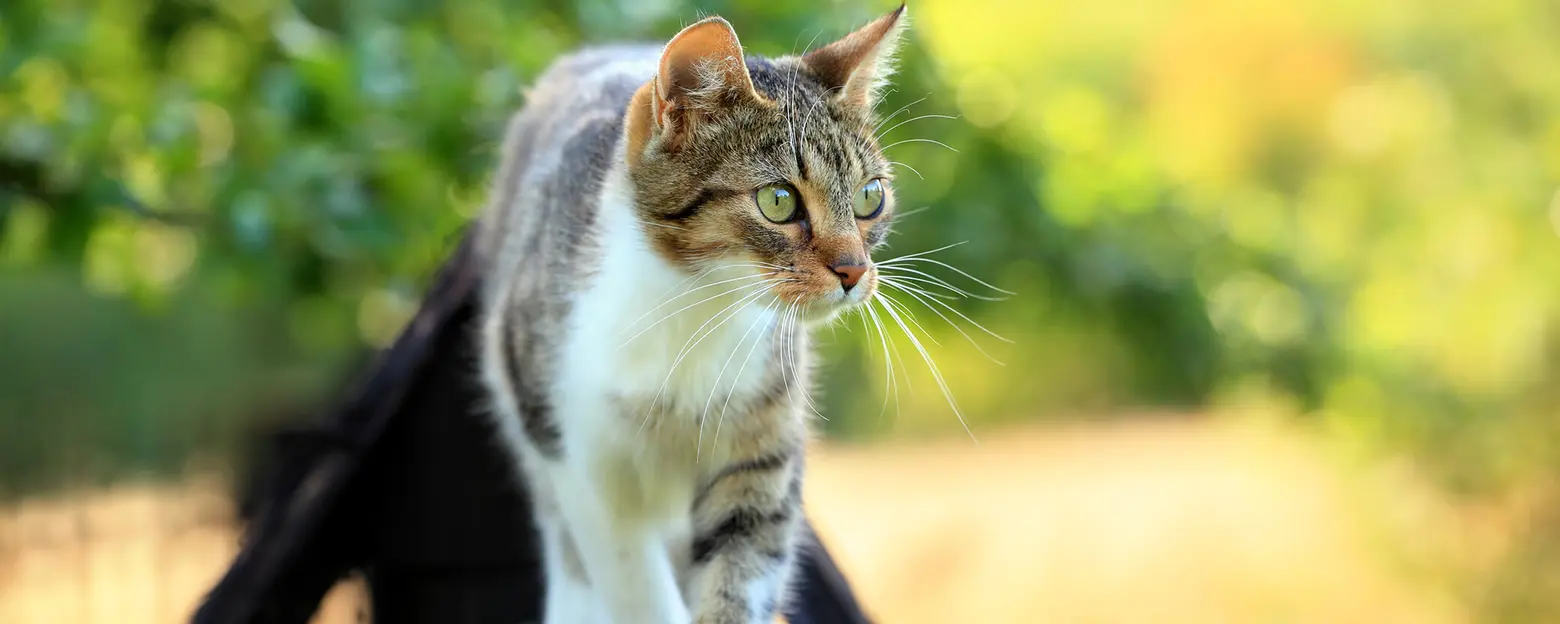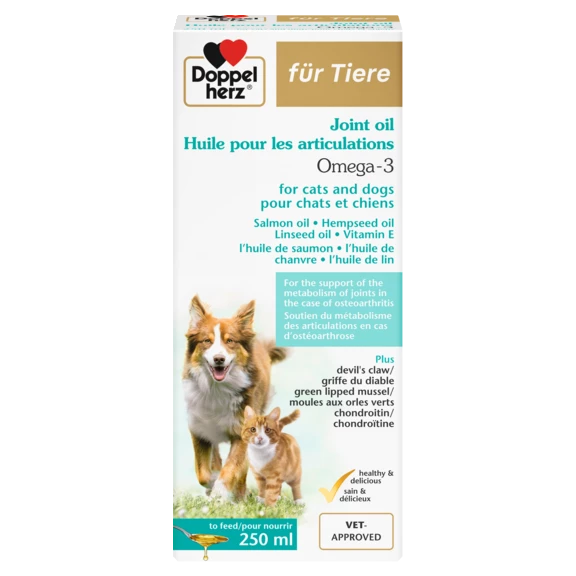But even with cats that are only kept indoors, the correct and healthy interaction of the entire musculoskeletal system is an important basis for vitality and health. A second cat in the same household can help to keep the four-legged friends on their toes. Otherwise, it is the human's responsibility to encourage the cat to play exercise games in addition to cuddling.
If a cat suffers from diseases of the musculoskeletal system, this not only limits it physically, but also causes pain that can rob it of the joy of life. In nine out of ten cats over the age of 12, arthrosis, spondylosis or dysplasia cause joint problems. But younger cats can also be affected by growth disorders, genetic predispositions or injuries. Fortunately, there are various remedies available for
joint and wear disorders as well as signs of old age that can help your cat to move pain-free into old age.
But to prevent this from happening in the first place, cat owners should follow this advice to avoid joint damage:
- Avoidance of overweight
At any age, a healthy weight is of great importance for your cat. Excess weight damages their joints at every stage of life and can cause osteoarthritis. Please have a critical eye on your pet's weight. Even if your cat "likes to eat so much", it is in your hands to prevent weight and thus joint problems at an early stage. But even with already existing problems, a weight loss can lead to a considerable reduction of the symptoms. - Individual and age-appropriate movement
Dog owners have an advantage here. They walk their pets several times a day and can also encourage them to exercise through dog sports or free play with other dogs. But it is also important for the cat to move as freely as possible and not to be unnecessarily constricted. This is because the cartilage is only supplied with sufficient nutrients through complete joint movement. It goes without saying that you should motivate your young cat more than your old cat. - Joint-friendly lying and sleeping area
Even if your cat prefers to hide in a cardboard box - somewhere in the flat there should be a soft and cosy place for him to sleep in order to avoid bedsores and painful pressure on the joints from outside. Whether this is a blanket, a pillow or a special cat bed, you can adapt to your pet's preferences. - Joint-healthy diet
Especially during growth, attention should be paid to an optimal allocation of energy, calcium and phosphorus. Both an oversupply and an undersupply can lead to growth disorders and thus long-term joint problems. But also in all other phases of the cat's life you should pay attention to a healthy and species-appropriate diet. Valuable essential fatty acids, vitamins as well as amino acids and plant substances that can positively support joint health are often not contained in the daily cat food. Here supplementary foods are a good way to provide your pet with special nutrients against joint diseases such as arthrosis.
Salmon oil is a high-quality supplier of valuable omega-3 fatty acids. It contains the essential fatty acids EPA (eicosapentaenoic acid) and DHA (docosahexaenoic acid) in a particularly high concentration - they help to counteract the inflammatory processes in joint diseases.
Green-lipped mussel powder supports joint problems with GAG (glycosaminoglycans) and special omega-3 fatty acids.
The 100% natural rosehip contains the antioxidants beta-carotene, vitamin E and vitamin C, which contributes to collagen formation and thus supports the joints.
The antioxidants vitamin E and manganese as well as the amino acid methionine support the joint metabolism in cats with osteoarthritis.
Glucosamine and chondroitin are endogenous building blocks of cartilage tissue. They promote the maintenance of healthy and elastic joint surfaces.
A high-dose combination of these different active ingredients is particularly effective for alleviating the symptoms of old age, degenerative diseases or joint inflammation. But it also represents preventive protection against joint diseases, so that cat owners already pay attention to the supply of joint-active nutrients to their young cat.

